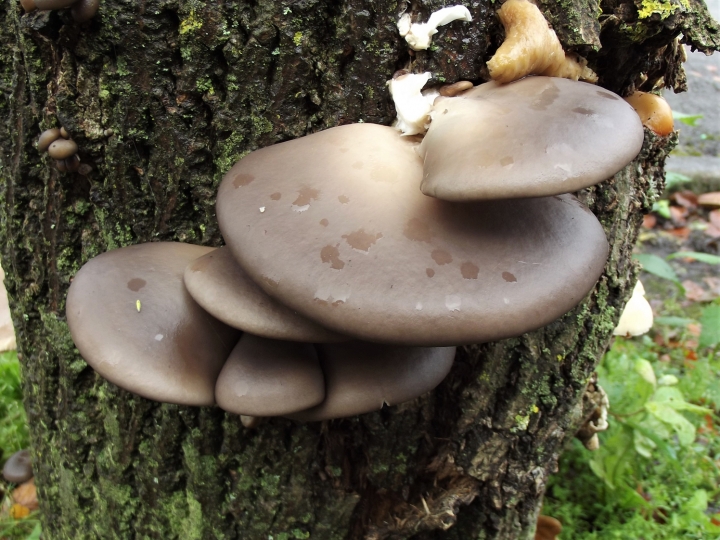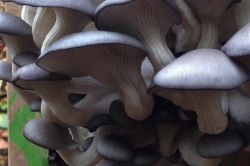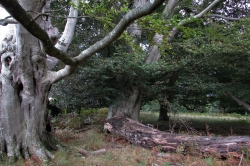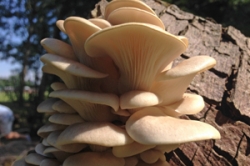Fairly common but localised. Can be found in large numbers at any time of year but more common in the Winter months.
Home / Mushroom Guide /
Oyster Mushroom
Oyster Mushroom
| Mushroom Type | |
| Common Names |
Oyster Mushroom (EN), Grey Oyster Mushroom, Wystrysen y Coed (CY), Boczniak Ostrygowaty (PL), Kései Laskagomba (HU) |
| Scientific Name |
Pleurotus ostreatus |
| Season Start |
All |
| Season End |
All |
| Average Mushroom height (CM) |
0 |
| Average Cap width (CM) |
15 |
Please note that each and every mushroom you come across may vary in appearance to these photos.
Cap
Convex and shell-shaped when young opening out flatter with wavy, sometimes split edges. Smoky grey/silver/brown.
Stem
White and opening out to the cap when present as sometimes the cap appears to comes straight from the tree.
Habitat
Deciduous trees, particularly beech. Grows in large shelf-like clusters on stumps and fallen wood.
Possible Confusion
The Pale Oyster (Pleurotus pulmonarius), pictured, is similar but paler and should be found in Summer unlike the Oyster Mushroom which prefers the colder months although either can grow at any time of year and it is thought they can hybridise making ID even harder.
Oysterlings look similar but never grow more than four centimetres across.
Angels Wings (Pleurocybella porrigens), which can be deadly if you suffer kidney disease. This is usually funnel shaped with a split so the funnel is incomplete. Rare and found mainly in Scotland.
Spore Print
Lilac. Cylindrical.
Taste / Smell
Excellent. Mushroomy.
Frequency
Common.
Other Facts
The Oyster Mushroom has some amazing properties one of which is that it is a carnivorous mushroom which traps and ingests nematode worms to provide it with nitrogen and other useful chemicals.
The species of genus Pleurotus contain statins which are thought to help reduce cholesterol.
Another is the fact that they have the ability to clean up pollution by hydrocarbons like petrol and oil which is quite incredible.



 (42 votes, average: 3.71 out of 5)
(42 votes, average: 3.71 out of 5)
































Leave a Reply